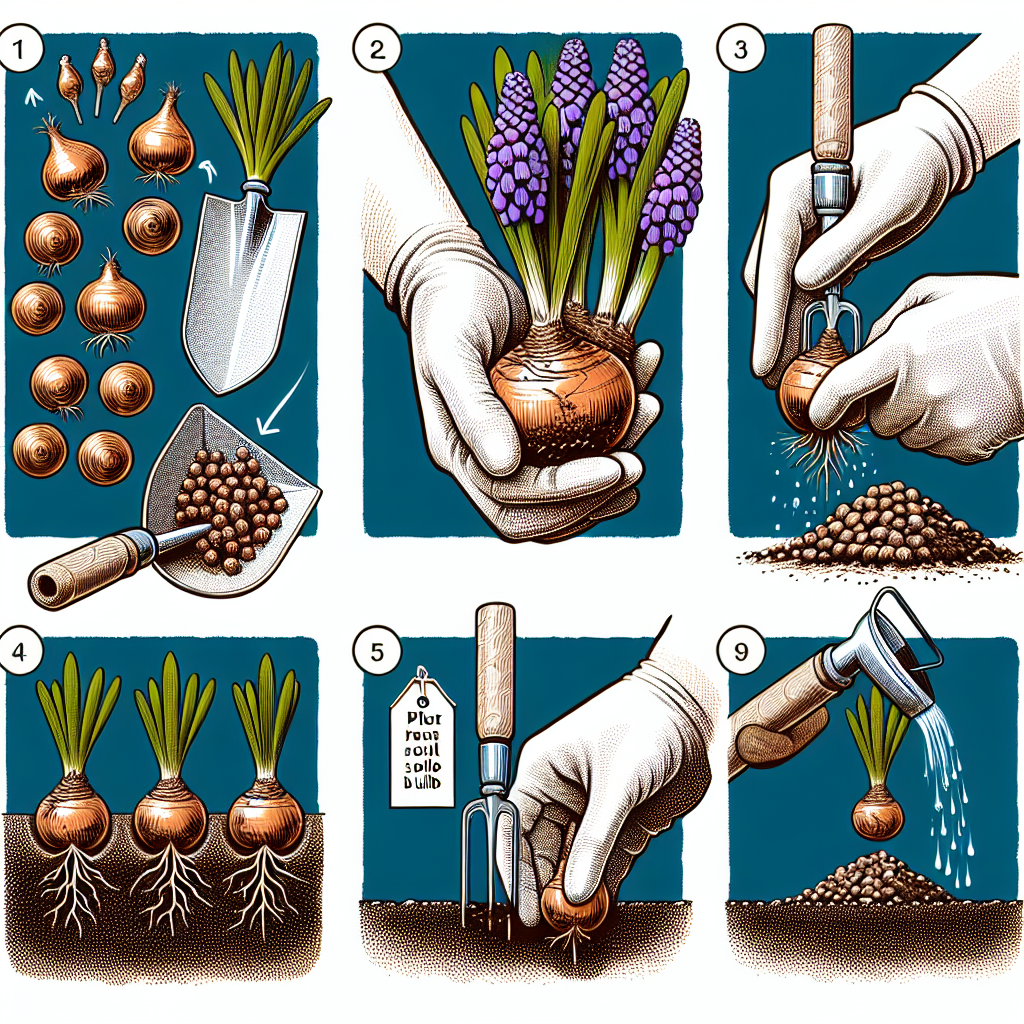
How to plant grape hyacinth bulbs
A Comprehensive Guide on Planting Grape Hyacinth Bulbs
Spring is a time for vibrant colors and blossoming flowers, and few plants capture this season's beauty quite like grape hyacinths. These charming little bulbs produce striking clusters of bell-shaped flowers that can brighten any garden or landscape. If you’re wondering how to plant grape hyacinth bulbs, you’ve come to the right place! In this guide, we’ll take you through everything you need to know to successfully add these delightful plants to your garden.
Understanding Grape Hyacinths
Before we dive into the planting process, let’s explore some fundamental aspects of grape hyacinths. These bulbs belong to the genus Muscari and are often sought for their lovely, fragrant blooms and ease of care.
Types of Grape Hyacinths
There are several species of grape hyacinths, each with unique colors and characteristics. Here are some popular varieties:
- Muscari armeniacum: Known for its classic deep blue flowers.
- Muscari botryoides: Features lighter blue hues and is often found in gardens.
- Muscari comosum: Often called the "grape hyacinth," has tufted, feathery flowers.
Benefits of Planting Grape Hyacinths
Gardeners are drawn to grape hyacinths for various reasons, including:
- Early Blooming: They typically blossom in early spring, providing color before most flowers have emerged.
- Naturalizing: Grape hyacinths can multiply and spread in the right conditions, creating beautiful carpets of color.
- Attracting Pollinators: Their fragrant blooms attract bees and other beneficial insects.
When to Plant Grape Hyacinth Bulbs
The timing of planting is crucial for the success of your grape hyacinths. Ideally, these bulbs should be planted in the fall, a couple of weeks before the ground freezes. This gives them enough time to embed their roots before winter sets in:
- Fall Planting: Approximately 6-8 weeks before the first frost in your area.
- Spring Planting: Although less common, late winter to early spring is viable if you acquire bulbs early in the season.
Preparing to Plant Grape Hyacinth Bulbs
Choosing the Right Location
Before planting, it’s essential to choose the right spot in your garden. Grape hyacinths thrive in well-draining soil and prefer full sun to partial shade. Follow these guidelines when selecting a location:
- Sunlight: Aim for at least 6 hours of sunlight each day.
- Soil: Well-draining soil is crucial to prevent bulb rot.
- Companion Plants: Consider planting them alongside daffodils, tulips or other spring-perennials for a lovely color palette.
Gathering Necessary Tools and Materials
To plant your grape hyacinth bulbs, you will need the following tools and materials:
- A trowel or a bulb planter
- Organic compost or bulb fertilizer
- A watering can or hose
- A marker for labeling (optional)
Step-by-Step Guide on How to Plant Grape Hyacinth Bulbs
Now that you’ve chosen your location and gathered your materials, it’s time to learn how to plant grape hyacinth bulbs. Follow these steps for optimal success:
1. Prepare the Soil
Start by loosening the soil in your chosen area. Remove any weeds, rocks, or debris that may hinder growth. Mix in some organic compost or bulb fertilizer to enrich the soil, making it well-draining and nutrient-rich.
2. Determine the Planting Depth
As a general rule, plant grape hyacinth bulbs about 3-6 inches deep; the depth can vary based on your climate:
- Colder climates: Plant deeper (up to 6 inches).
- Milder climates: Plant shallower (around 3 inches).
3. Spacing the Bulbs
When planting, space the bulbs about 3-4 inches apart. If you desire a more naturalized look, consider clustering them into groups of 5-10 bulbs.
4. Planting the Bulbs
Place the bulbs in the holes with the pointed end facing upward. Gently cover them with soil, ensuring they are securely tucked in.
5. Watering
After planting, water the area lightly to settle the soil around the bulbs. Avoid overwatering, as too much moisture can lead to rot.
6. Mulching (Optional)
To conserve moisture and regulate soil temperature, you may choose to apply a thin layer of mulch. This extra step is beneficial, especially in extreme weather conditions.
Caring for Your Grape Hyacinths
Once you’ve planted your bulbs, proper care will ensure a lovely bloom in the spring. Here’s what to keep in mind:
Watering
If there is little rainfall, water your bulbs in the early spring as they start to grow. Once established, they require minimal watering.
Fertilizing
Applying a balanced fertilizer in early spring can encourage vigorous growth and more vibrant blooms. Be sure to follow the manufacturer’s instructions for application rates.
Post-Bloom Care
After flowering, allow the foliage to remain until it starts to yellow. This is crucial for photosynthesis, as the leaves will store energy for the bulbs to use in subsequent growing seasons. Simply trim back the foliage once it has completely died back.
Common Pests and Diseases
Grape hyacinths are relatively low-maintenance and resistant to pests. However, they can sometimes fall prey to:
- Bulb rot: Caused by excess moisture.
- Aphids: Small insects that can damage foliage.
To combat these issues, ensure proper drainage and occasionally check for pests. If you notice any signs, consider using an insecticidal soap for aphids or, in the case of bulb rot, lifting and inspecting the bulbs.
Conclusion
Learning how to plant grape hyacinth bulbs is an enjoyable process that can yield stunning results in your garden. With a bit of preparation and care, you can enjoy beautiful clusters of these enchanting flowers every spring. Embrace the joy of gardening, and don’t hesitate to mix and match grape hyacinths with other springtime florals for a vibrant display. Happy planting!
By Guest, Published on August 20th, 2024